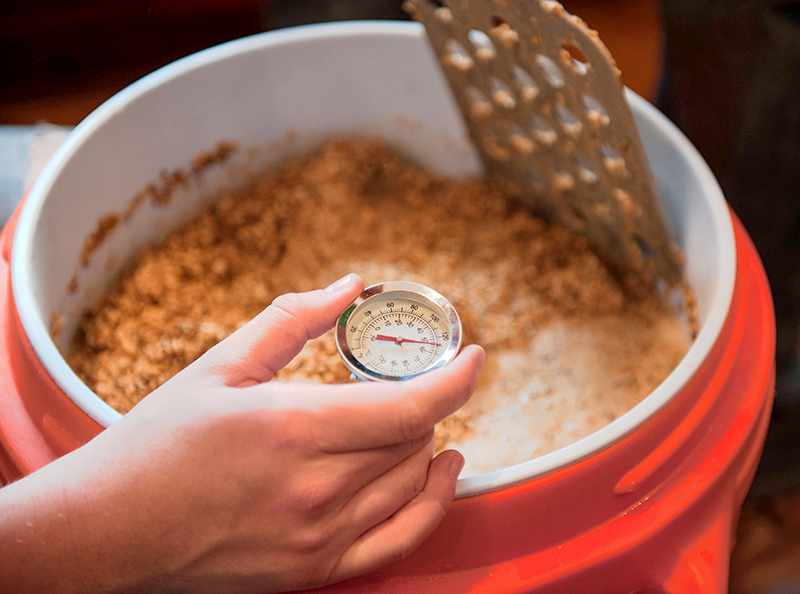 Beginning homebrewers have some options when learning to brew – quite of few of them actually. But one of the main decisions is whether to start with extract brewing, partial mash, or all-grain. Because all-grain is typically for more seasoned brewers, most beginners start with either extract or partial mash brewing. In this post, I’ll lay out some of the key differences between the two kinds of homebrewing.
Beginning homebrewers have some options when learning to brew – quite of few of them actually. But one of the main decisions is whether to start with extract brewing, partial mash, or all-grain. Because all-grain is typically for more seasoned brewers, most beginners start with either extract or partial mash brewing. In this post, I’ll lay out some of the key differences between the two kinds of homebrewing.
First, some basics…
When looking at the difference between extract, partial mash, and all-grain, the main difference lies in the source of fermentable sugars. All-grain brewers (and the pros) extract everything they need from malted grains through a process called mashing. It requires strict attention to parameters like temperature, pH, and water chemistry – something that can be a little overwhelming if you’re just cutting your teeth on homebrewing.
Luckily for beginners, there’s a way around all this work. It’s called malt extract. Basically, professional brewers have already done the mash, then taken the resulting liquid (wort) and condensed it into either a liquid syrup or a spray-dried powder. These two types of malt extract are referred to as liquid malt extract (LME) and dried malt extract (DME). There are a few different flavors to choose from, so extract offers plenty of options for beginners.
Extract Brewing vs. Partial Mash Brewing
Both techniques use malt extract to supply a majority of the fermentable sugars, but the key difference between the two brewing methods is in the use of malted grains. The main difference is that extract brewing gets nearly all of its fermentable sugars from extract, whereas for partial mash, the brewer will do a mini-mash – the same procedures as an all-grain brewer, but on a much smaller scale – and then supplement with malt extract. For a five-gallon batch, the mini-mash may be just be a pound or two of grain, compared to ten pounds or more for all-grain.
Extract sometimes (but not always) will use a small amount of specialty grains in a beer recipe. These are steeped, like a tea, to extract color and flavor from the grains, but the contribution of fermentable sugar is negligible.
With partial mash, on the other hand, the brewer actually performs a mash. That means mixing both base malt and specialty grains with water with the purpose of extracting fermentable sugar from the malt. The brewer stills gets a good amount of sugars from malt extract, but he/she is also trying to extract sugars from the grains. To do this, the brewer needs a few additional tools: a thermometer, a method for checking pH, gypsum, and chalk. To learn more about partial mash, read these step-by-step instructions.
- Fewer grains – easier cleanup
- Shorter brew day
- Focus on the overall brewing process instead of getting bogged down by mashing
- Lots of recipe kits to choose from
Benefits of Partial Mash Brewing
- Learn more about brewing the way all-grain brewers do it
- The mash allows the brewer to use a wider range of different malts and grains, giving them more flexibility for recipe development and adaptation
- There are also lots of partial mash recipe kits to choose from
Whether you decide to start out with extract or partial mash brewing is entirely up to you – there’s no right or wrong way to do it, and there’s no reason you can’t switch back and forth from batch to batch. Whatever you do, make sure you’re having fun and the rest will take care of itself!
—–
David Ackley is a writer, brewer, and craft beer marketing consultant. He holds a General Certificate in Brewing from the Institute of Brewing and Distilling and is founder and editor of the Local Beer Blog.

